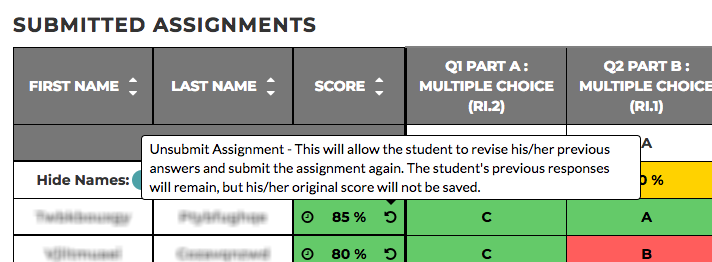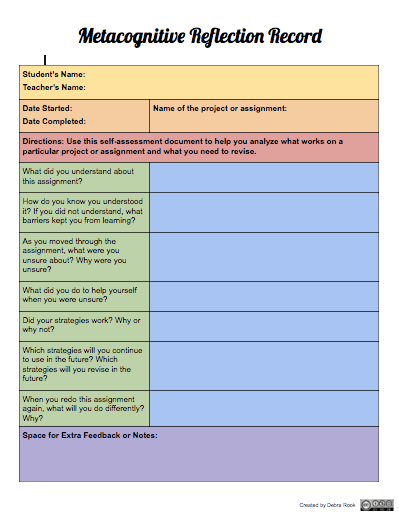In this guest teacher post, Debra Rook describes how to help students chunk complex texts as they read.
No More One and Done
On our first official day of class, I assigned my 8th grade Humanities students a cold reading of the myth “The Star and the Lily” by Hamilton Wright Mabie. The text is relatively short, but the reading level challenged my students, especially since they’d just returned from summer break. Unfortunately, as I feared, many of my new students seemed to suffer from Summer Slide, caused by a lack of dedicated reading time during their eight weeks off from school. As they tackled the text, I saw foreheads crinkle and lips frown. The floor echoed a rhythm of frustration from tapping feet and bouncing knees.
I was okay with this.

I knew my students needed to experience a certain amount of frustration with the text in order to break out of the “one and done” cycle. One and done describes the way many students traditionally approach literacy by only reading it once without ever rereading. But a growth mindset does not come from approaching tasks only once and in only one way. Before I could help my students grow their literacy skills, I needed them to see the value in reviewing and redoing work.
I needed my students to understand their own thinking in order to move forward.
Thinking About Thinking
Metacognition, or thinking about thinking, is an important self-regulation skill successful students master in order to achieve academic success. When students practice metacognitive skills, they take time to stop and reflect before, during, and after a task. Reflecting on process as well as outcomes help students know what to change and improve. In essence, successful students think beyond themselves to see their learning in an objective way.

Students who successfully practice metacognitive skills organize workspaces, complete tasks on a schedule, create plans for learning, monitor learning tasks, identify necessary changes, and understand how to apply “fix it” strategies to reach a goal. Successful students do not need to rely on teachers or parents to monitor their progress because they understand how to manage and monitor their own learning. Because successful students master metacognitive skills, they experience fewer setbacks, become less discouraged, and remain more engaged with their work.
While it can seem like successful students instinctively “have it together,” the truth is metacognition is a learned skill. One way teachers can help students become metacognitively strong is by breaking the “one and done” mentality and replacing it with “review and redo” as a classroom expectation.
A tool teachers can use to help students slow down and apply metacognitive skills is enabling Guided Reading Mode on CommonLit. Guided Reading Mode chunks texts into smaller sections. Students cannot read the next part of the text until they get a comprehension question correct about the part they just read. This helps focus students on the text and prevents them from scanning ahead.
Review and Redo
After my students completed a CommonLit assignment independently, I led them through an analysis of our class scores using our data from CommonLit. Students could only see whole class averages for the assessment questions.

As a whole class, we discussed trends in the data and analyzed each question and answer, generating hypotheses about why students answered questions correctly or incorrectly. Students then worked in pairs to revisit the text to find evidence and justify why a particular answer was correct.

After the discussion and pair work, I told the students I was erasing the first scores. We would reread the text and retake the assessment, but the scores wouldn’t count toward their grade. Instead, students would complete a metacognitive reflection document to show the thinking they did with the text. The Metacognitive Reflection Record was the only part of the process I entered in the gradebook.

Students responded positively to the process of “review and redo” when they understood how and why struggling with a text or assignment could help them improve. Below, I’ve shared responses from a few students.
“I kind of felt happy about the review and redo because even though I had a good score the first time, I learned a lot more and tried harder on the redo.”
“I felt the myth was complicated when we first read it, but after looking at the notes, I understood it a lot better. If I had another assignment, I might feel stressed out about it at first, but if I knew I could redo it, I would feel good about it because we would be able to look over our notes and see what we did wrong the first time.”
“I felt confused at first because there were so many new words compiled together. I had to go over it again and again and again to get unconfused before I finally got it together. I’m glad I had multiple opportunities so I could get a better grade on the first test and know for next time what to do better.”
The Struggle IS Real
Students often think “struggle” is a negative word: something to avoid. However, teachers can reframe “struggle” to become an important part of the learning process. This only works if students understand how to objectively break down their thinking process and how to make adjustments that affect change. Metacognitive skills can be integrated into a “review and redo” classroom culture where students know the work they do adds up to much more than a “one and done” score.
Next Steps
Moving students from the fixed mindset of “one and done” to the growth mindset of “review and redo” takes time as students work to adapt with new skills. A key element in the transition is scaffolding assignments to incorporate direct teaching of metacognitive skills.
Encourage your students to use metacognition in your classroom to get them grappling with the deeper issues of a text!
Debra Rook is a middle and high school English teacher in North Carolina. She’s been teaching for 17 years and was awarded “Teacher of the Year” multiple times. She is co-creator and co-director of MetaLab, an innovative learning program teaching students metacognitive skills.


